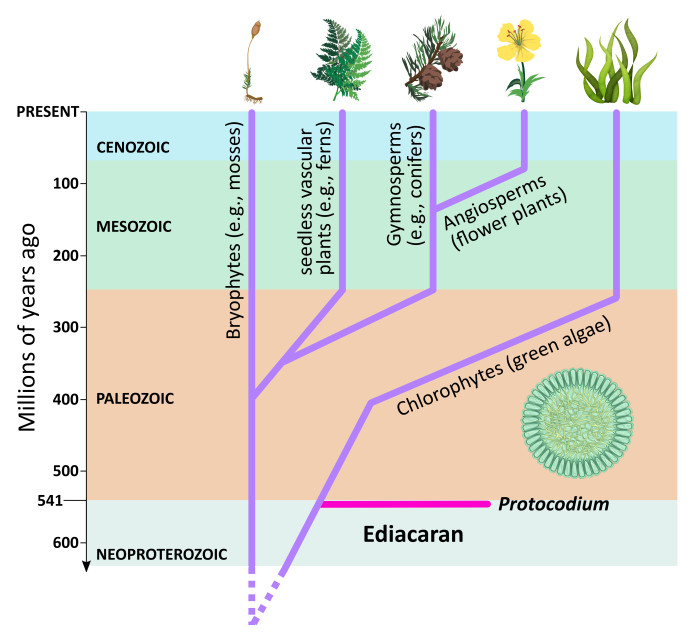Paleontologists have identified a new genus and species of algae, called Protocodium sinense, which predates the origin of land plants and modern animals, providing new insight into the early diversification of the plant kingdom.
In a study published in BMC Biology, researches opened a window into a world of evolutionary puzzles that scientists are just beginning to unravel.
In recent years, Precambrian lifeforms have generated an ever-increasing interest because they revealed a rich eukaryotic diversity prior to the Cambrian explosion of modern animals.
Discovered at a site in China, this 541-million-year-old fossil is the first and oldest green alga from this era to be preserved in three dimensions, enabling the researchers to investigate its internal structure and identify the new specimen with unprecedented accuracy.
The newly discovered Protocodium fossils were found by a team led by Hong Hua, professor of geology and Shu Chai, postdoctoral researcher, both of Northwest University, Xi’an, China.

It is part of the Gaojiashan biota, the name given to a significant group of exceptionally well-preserved fossils, at the Dengying Formation in the southern Shaanxi Province. In the past 20 years, this geological formation has yielded important fossil species documenting the end of the Ediacaran Period 541-million-years ago.
Protocodium fossils
“Protocodium belongs to a known lineage of green algae and has a surprisingly modern architecture, showing that these algae were already well diversified before the end of the Ediacaran period,” co-author Cédric Aria, postdoctoral fellow in the Department of Ecology & Evolutionary Biology in the Faculty of Arts & Science at the University of Toronto and based at the Royal Ontario Museum (ROM) said.
“Its discovery touches the origin of the entire plant kingdom and puts a familiar name on the organisms that preceded the Cambrian explosion over half a billion years ago, when the world’s first modern ecosystems emerged.”
Protocodium fossils are small spheres half a millimetre wide, like large grains of pollen, covered by a multitude of smaller domes. Thanks to the 3D examination, researchers determined the domed surface to be part of a complex, single cell that contains thin strands called siphons. This morphology is typical of certain modern single-celled seaweeds that contain many nuclei.
“We know that seaweed-like fossils are at least one billion-years-old,” says Chai, the study’s first author. “But until now, flat, grainy two-dimensional preservation has made it challenging to recognize more than general morphological structures.”
“Until now, flat, grainy two-dimensional preservation has made it challenging to recognize more than general morphological structures.”
Shu Chai
The team's findings have several important implications
First, Protocodium allows for a more precise calibration of Archaeplastida and directly confirms that a group as derived as Ulvophyceae was already well diversified in various ecosystems prior to the Cambrian explosion.
Details of tridimensional morphology also invite a reassessment of the identification of other Ediacaran algae, such as Chuaria, to better discriminate mono-versus multicellularity, and suggest unicellular Codium-like morphotypes could be much older and widespread.
More broadly, Protocodium provides insights into the early diversification of the plant kingdom, the composition of Precambrian ecosystems, and the extreme longevity of certain eukaryotic plans of organization.
“It’s very telling that such an organism has remained practically unchanged over at least 540 million years,” Aria said. “By the Ediacaran, evolution had driven it towards a stable adaptive zone — it’s been comfortable there since, and more than that, quite successful. So much so, in fact, that nowadays Codium takes advantage of global trade to easily outcompete other algal species.”
